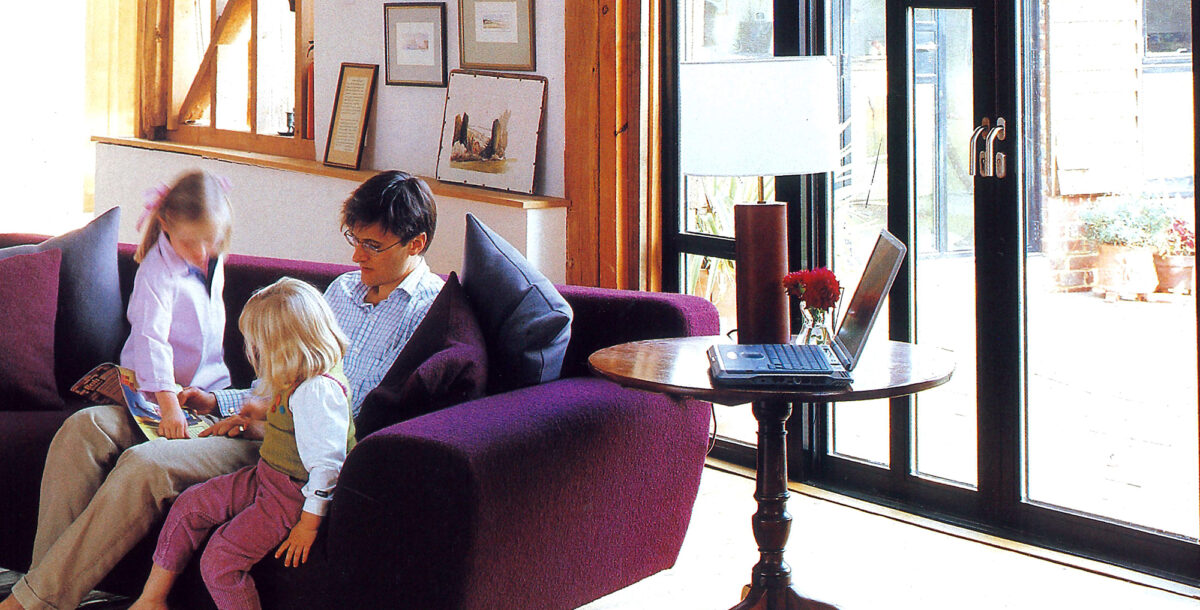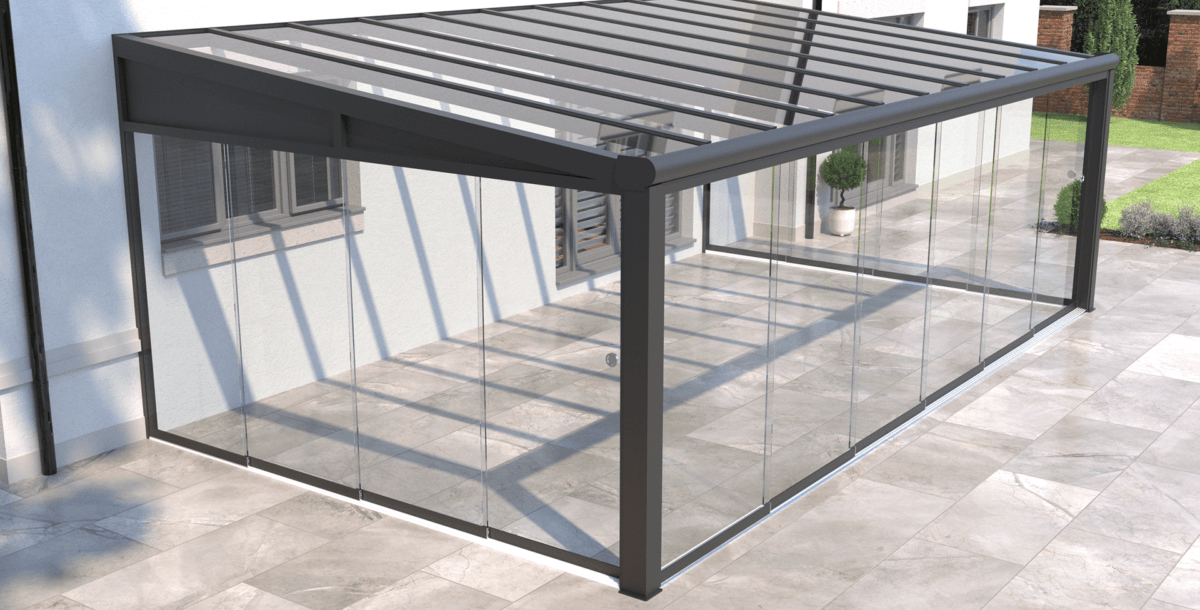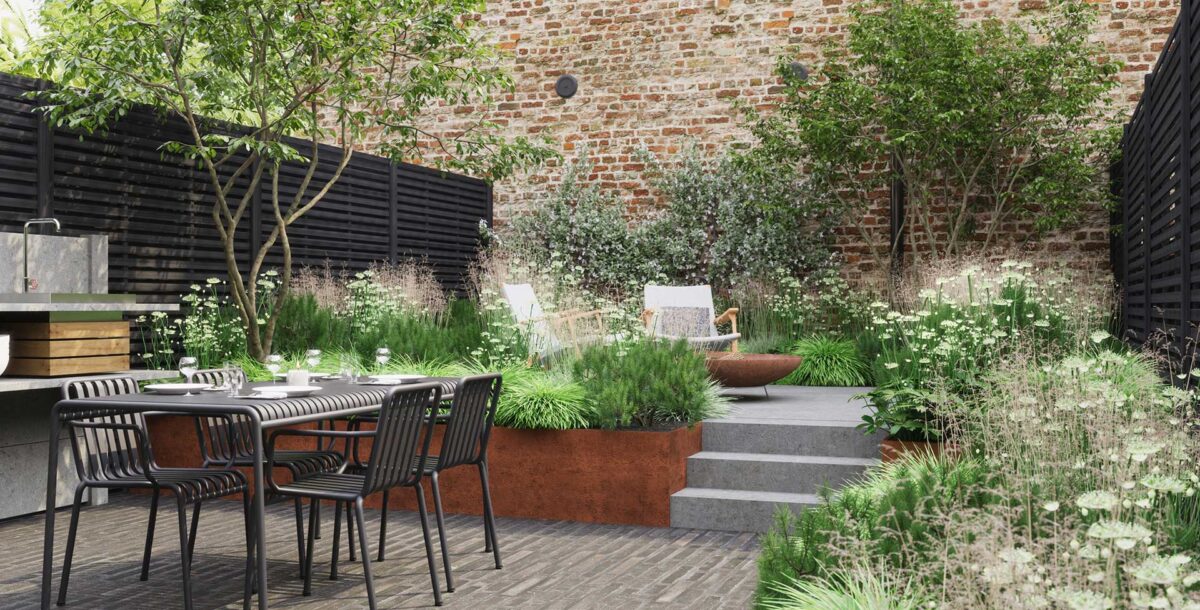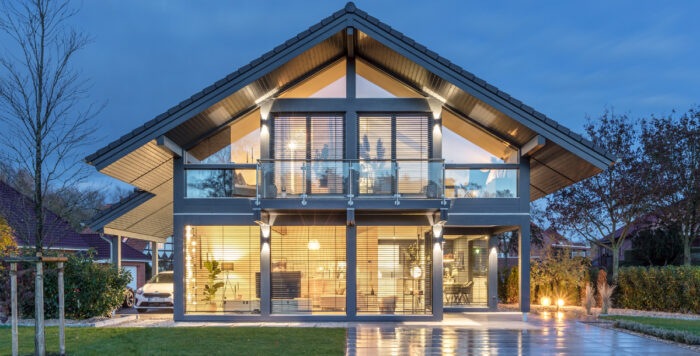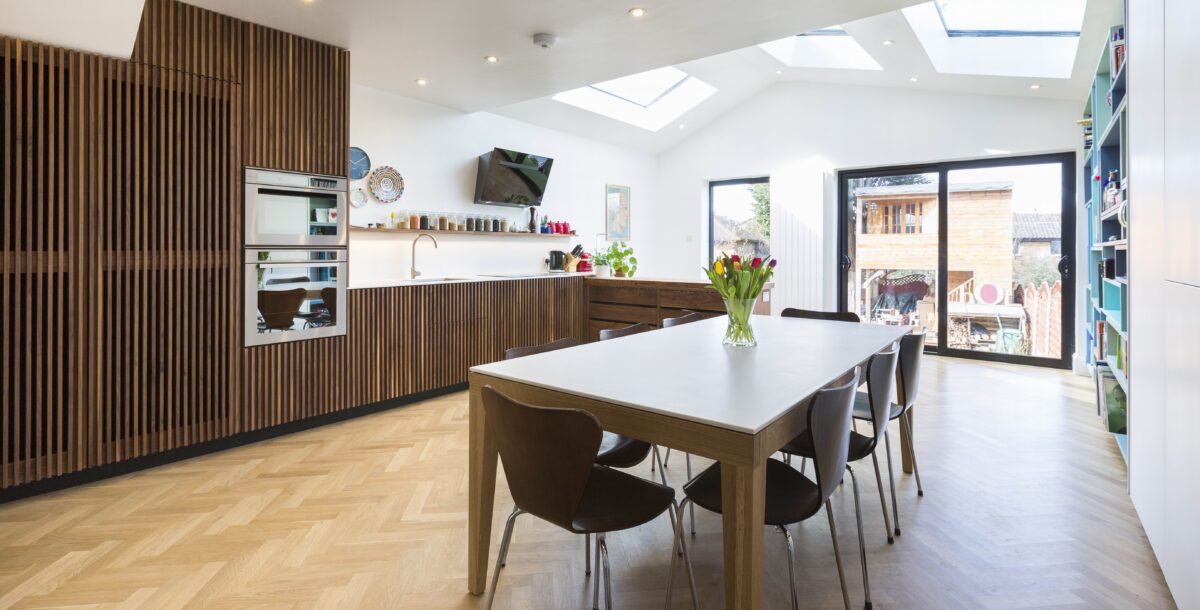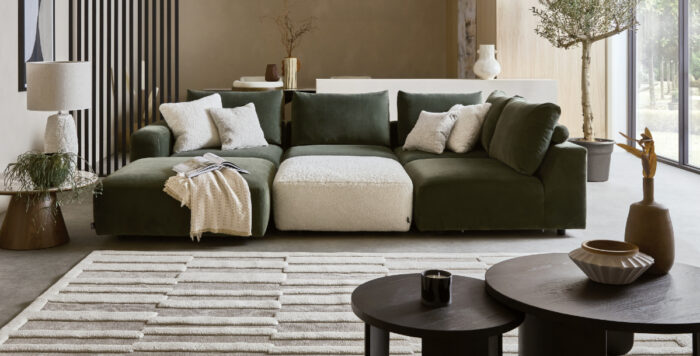How to zone your garden
Whether you're landscaping a large plot or utilising a bijoux backyard, zone your garden and it could transform how you experience it
Zone your garden well, and it can be not only a brilliant extension of your home, but re-connect you with nature and outdoor living. To that end, think of your garden as you would your home, and each zone being a room you could use. Dividing your space can transform how you use it, for example, a well-lit dining table that’s close to the kitchen means you might regularly entertain and eat alfresco. A sunken garden patio with a firepit could provide the perfect spot to catch up with your partner in the evening, or an outdoor shower may provide a place to unwind in nature from the week’s busyness. From water features to pergolas to outdoor kitchens, whether you’re landscaping a large plot or utilising a bijoux backyard, zoning your garden could transform how you experience it.
Consider a sunken garden patio
A sunken garden can bring a central focus to a garden and create a relaxing haven to retreat to. Below ground level (typically around a foot), sunken gardens have landscaped sides or walls that add privacy, and shelter the area from the wind, which is particularly great if you an exposed plot. In 1908 King Edward VII had a sunken garden built at Kensington Palace, modelled on the famous Pond Garden at Hampton Court Palace – but a sunken garden can be incorporated into any shape or size of garden. They can provide ideal spots for outdoor living rooms and are a great alfresco riff on the conversation pit, like Andrew and Lottie’s gorgeous East London garden (pictured).
There are some key considerations to think about before you get started on a sunken patio and designing with a landscape gardener is recommended. Decide the purpose of your sunken garden, will it house a seating area, or a vegetable plot? Think about the depth, preferably no deeper than 120cm, as it could feel gloomy. Consider access points, and make sure any steps leading down to your sunken garden are well-lit. If you’re building a basement in your home, a sunken garden is an ideal way of bringing light to your interiors and creating a flow between your house and garden.
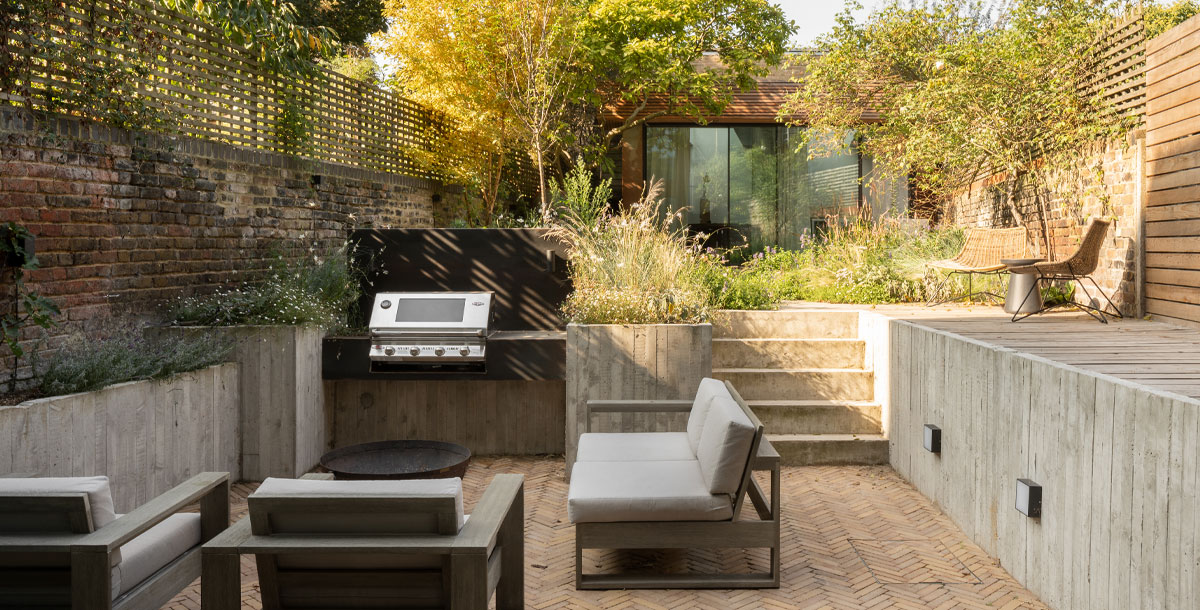
- Image credit: Stale Eriksen
Use tiling to zone your garden
In interior design, rugs are a great way to zone your spaces and pull a room together. While outdoor rugs have been gaining in popularity with an increase in outdoor living, they tend to be made from polypropylene (favoured for its durability and UV-resistance) and not from more sustainable natural materials like jute or seagrass which can get mouldy or mildew-laden if left outside. There is the exception of the brilliant Weaver Green, who make eco-friendly outdoor rugs, each one is made from up to 3, 000 recycled plastic bottles.
An alternative and long-lasting option to man-made outdoor rugs is to use tiles in your seating area, to create the zone of a rug. Made from porcelain, these Tile Mountain Bellevue Star Decor tiles (pictured) are anti-slip with a matt finish. Outdoor tiles can also be used to create paths and walkways to connect your zoned areas.
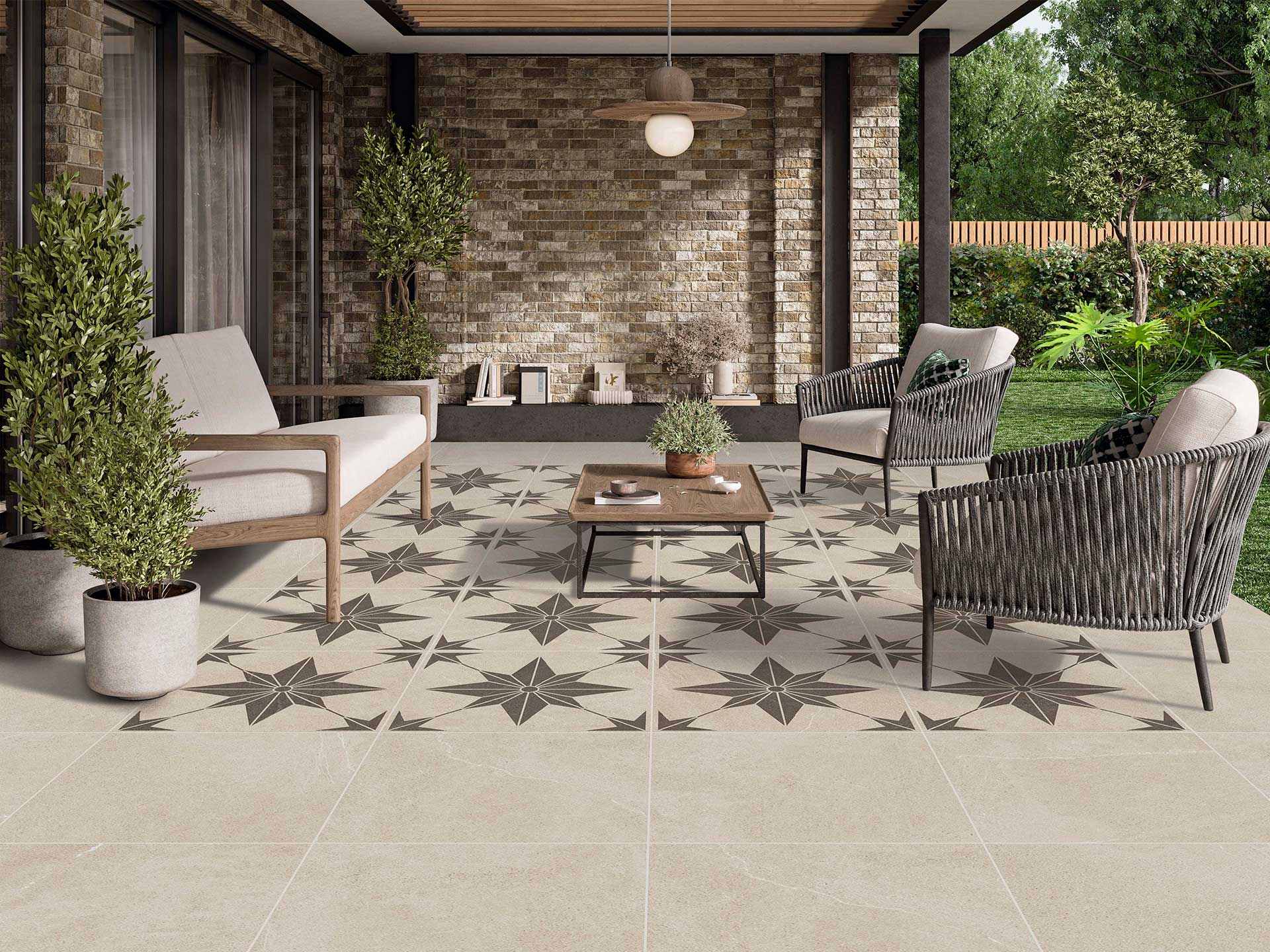
- Image credit: Hyperion Tiles
Zone your space with plants
Soto Gardens is a garden company with a difference: it delivers a curation of planting collections to your door, specific to your garden conditions. Will from Soto Gardens explains when zoning your space with plants, “how you transfer from zone to zone is important. It will also help you with your plant choices depending on what you are hoping to achieve in these areas”. He says that “taller grasses such as golden dew or the purple moor grass can create translucent barriers to spaces, perfect for wrapping around a seating area – they will offer a sense of privacy and seclusion when sat. Lower planting can create a more formal and directional scheme, such as low hedging or sways of lavender”.
“Deeper planting beds that encroach into the garden are a great way to zone a space, drawing the eye, leaving you to wonder what’s beyond. This is often how designers are able to create different atmospheres within a garden. Slightly more formal closer to the house, then relaxing as the journey in the garden progresses.”
Don’t forget trees, Will describes how “trees can offer the wow factor whilst also shielding unsightly views. Should your scheme warrant, try pulling the trees in away from the boundaries. It is very easy to push everything to the edges of a garden but by pulling the trees and planting in and playing with the planting depths, you can offer new perspectives when in the garden, making the overall experience much more interesting when going from zone to zone.”

- Image credit: Soto Gardens
Create a stepped garden
Born and Elinor Barikor’s Grand Designs’ home in Richmond is a great example of how a basement level in a home can lead onto a garden, and their bedroom opens out onto a cleverly stepped garden that’s full of “plants pollinated by insects rather than wind, such as hydrangea and lavender, keep airborne pollen to a minimum.”
Will from Soto Gardens, also explains how levels can add interest to your green space and says “try to embrace your gardens levels, even just one step up or down can make the area feel completely different. Try adding planting around the steps, topiary domes such as taxus and ilex can offer a formal welcome, whilst the friendlier hydrangea Annabelle partnered with astrantias and geraniums will offer a softer scheme.”
Stepped gardens are also a practical solution for a sloped garden and there are a variety of options of how to zone your steps from tiered planters to gabion walls to weatherproof Corten steel.
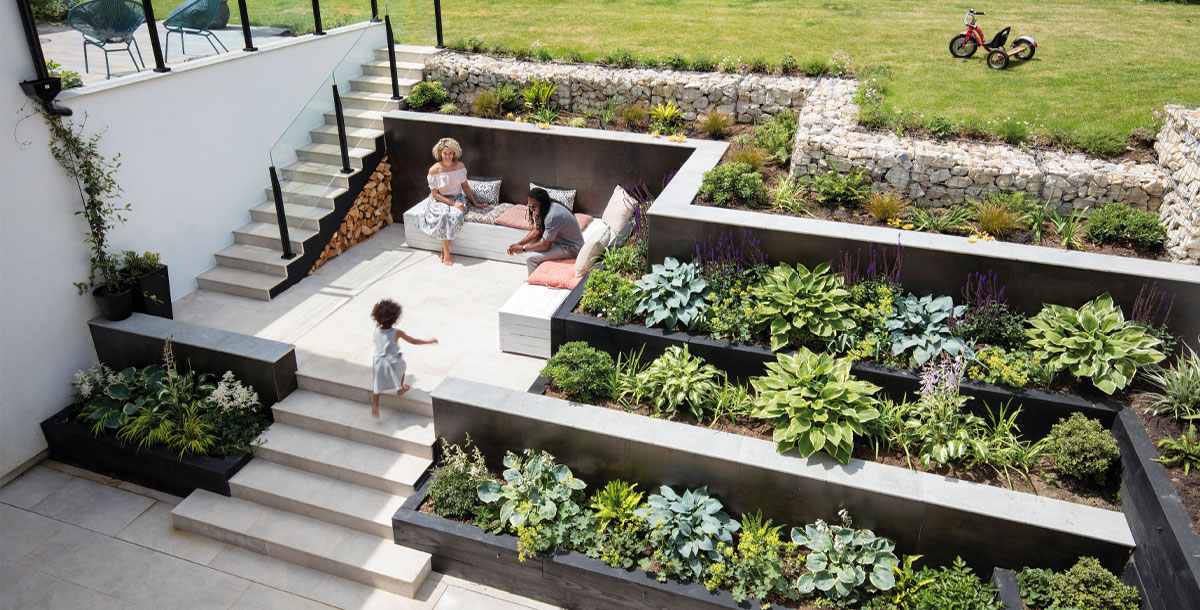
Add a decorative pergola
The earliest pergolas are thought to date back to around 800 BC, and they were a coveted garden mainstay in both Egyptian and Roman architecture offering a myriad of benefits, from providing shade to affording a structure to grow grape vines over. The humble pergola, whose Italian name typically means “timber frame”, is just as important in today’s gardens and can provide an easy, and inexpensive way to zone your garden.
Their height lends itself to more growing space within your garden, perfect for climbing plants like rambling roses, wisteria and clematis, and it can add privacy and dappled shade to a seating area, if you’re overlooked by neighbours. A pergola doesn’t have to be wooden, it can add a design statement, like the decorative Corten steel Stark & Greensmith one pictured.
On the most part, you won’t need planning permission for a pergola, but Stark & Greensmith do say, “if you live in a conversation area or your pergola will be further than 20 metres for your house or larger than 10 metres square, you will need to seek planning permission.” Handily, once their Corten steel ones are installed, they’re fully weatherproof and zero maintenance.
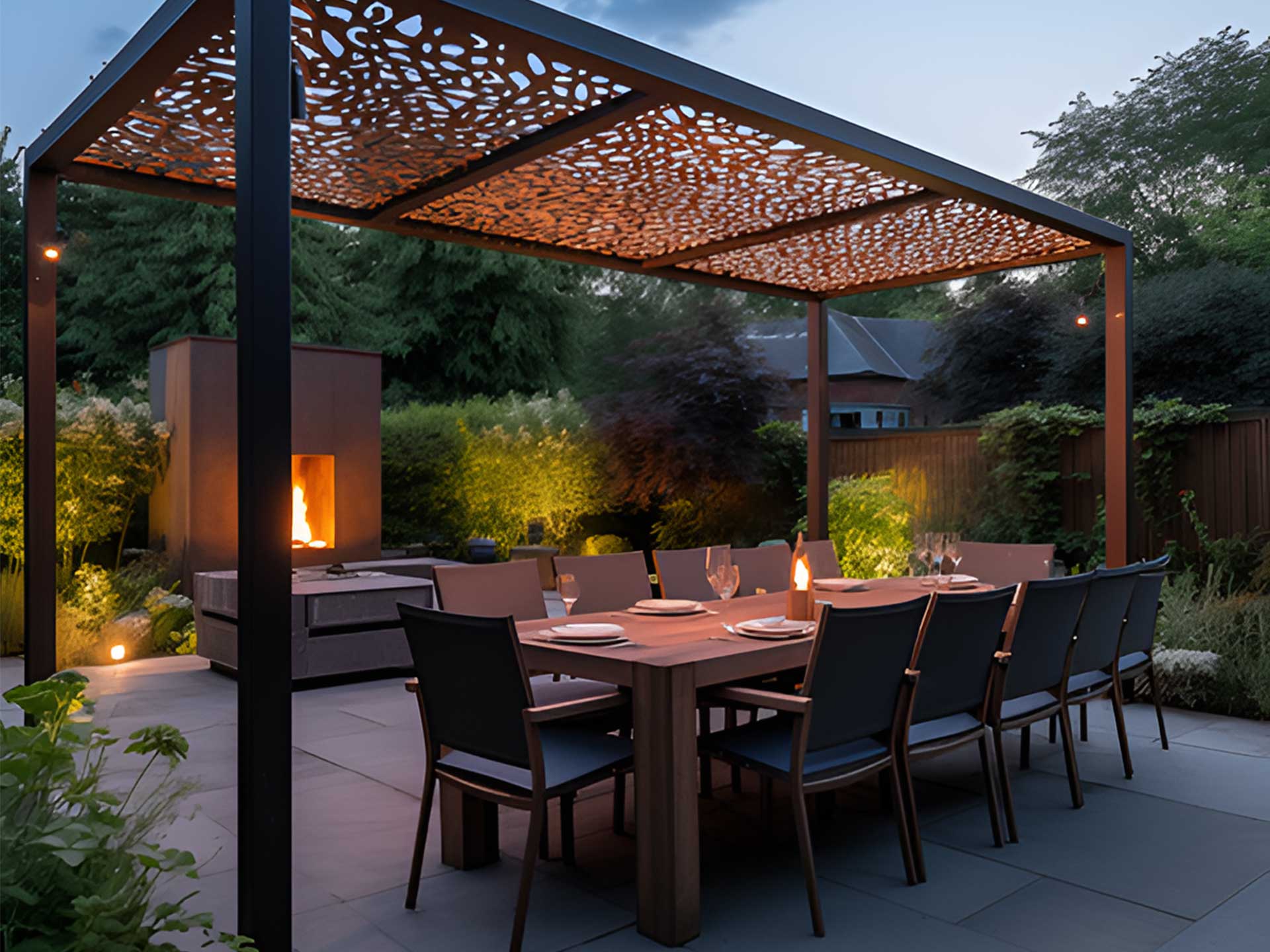
- Image credit: Smith & Greenstark
Zone with lighting
Outdoor lighting takes your garden up a notch, it not only gives it a design edge, it will add plenty of atmosphere and make it so much more usable and enjoyable. It can take a bit of planning to light your garden well, but it’s so worth it once you’ve nailed it. First of all, work out your space and what you want to light, be it a seating area, a sculpture or tree or a border. Each of these spaces might require a different type of light, walk around the garden and make a list of what you want to light. Start with soft front wall door lights, so you can see as soon as you enter the garden. Low-hanging path lights can illuminate a pathway, while hidden lighting under seating and steps (like pictured) can add a polished look to your garden lighting scheme.
When it comes to outdoor lighting, a less is more approach tends to be better as a general rule of thumb. After all you want to highlight and enhance the nature, not overpower it. Consider the wattage and temperature of your bulbs, and if you want solar-powered, battery or electric. When installing any outdoor lighting, be aware of the effects of ALAN (artificial light at night), as light pollution can disrupt the night time environment and the nocturnal wildlife that inhabits it.
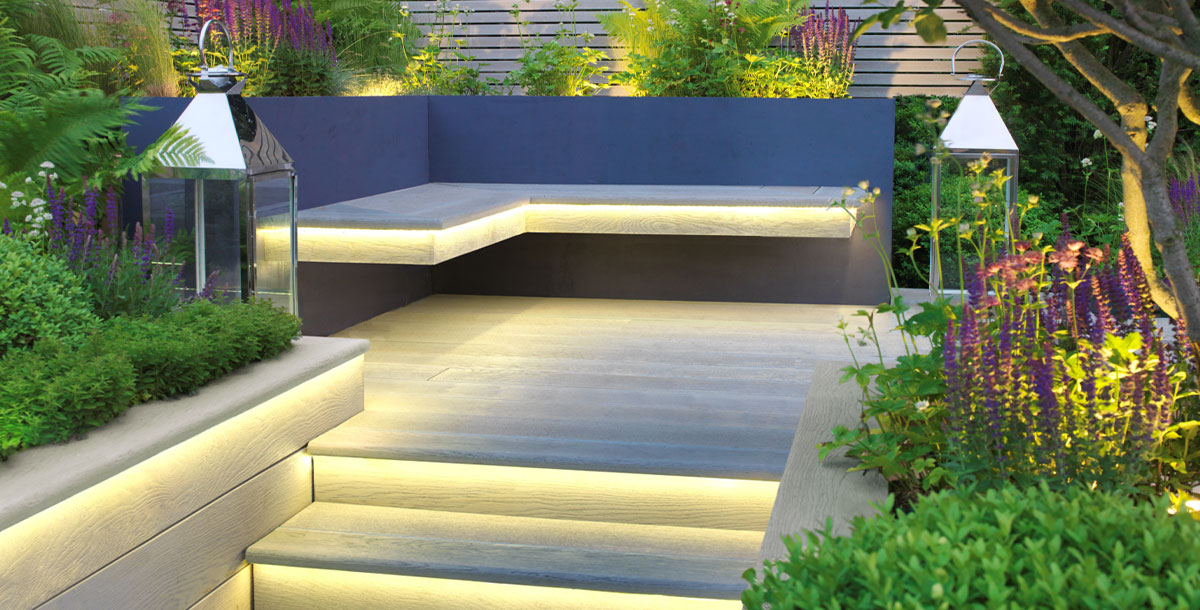
- Image credit: Millboard
Add a secluded outdoor shower
As our gardens become an extension of our homes, creating practical, yet luxurious ways to use them is gaining ranks in popularity. Outdoor showers, while not exactly a necessity, are a refreshing addition to your garden, particularly if you live by the sea. If you are going to add an outdoor shower or bath, zoning the area for privacy is key, you don’t want your neighbours looking in. Think about plumbing, a cold shower might only need a hose connection, but if it’s warm water, you will need plumbing pipes. Install it in the sunniest spot in your garden, so the water dries quickly and consider drainage, often you’ll be able to create drainage like decking that will drain straight into your garden. It could also be a way of recycling waste water to water your plants.
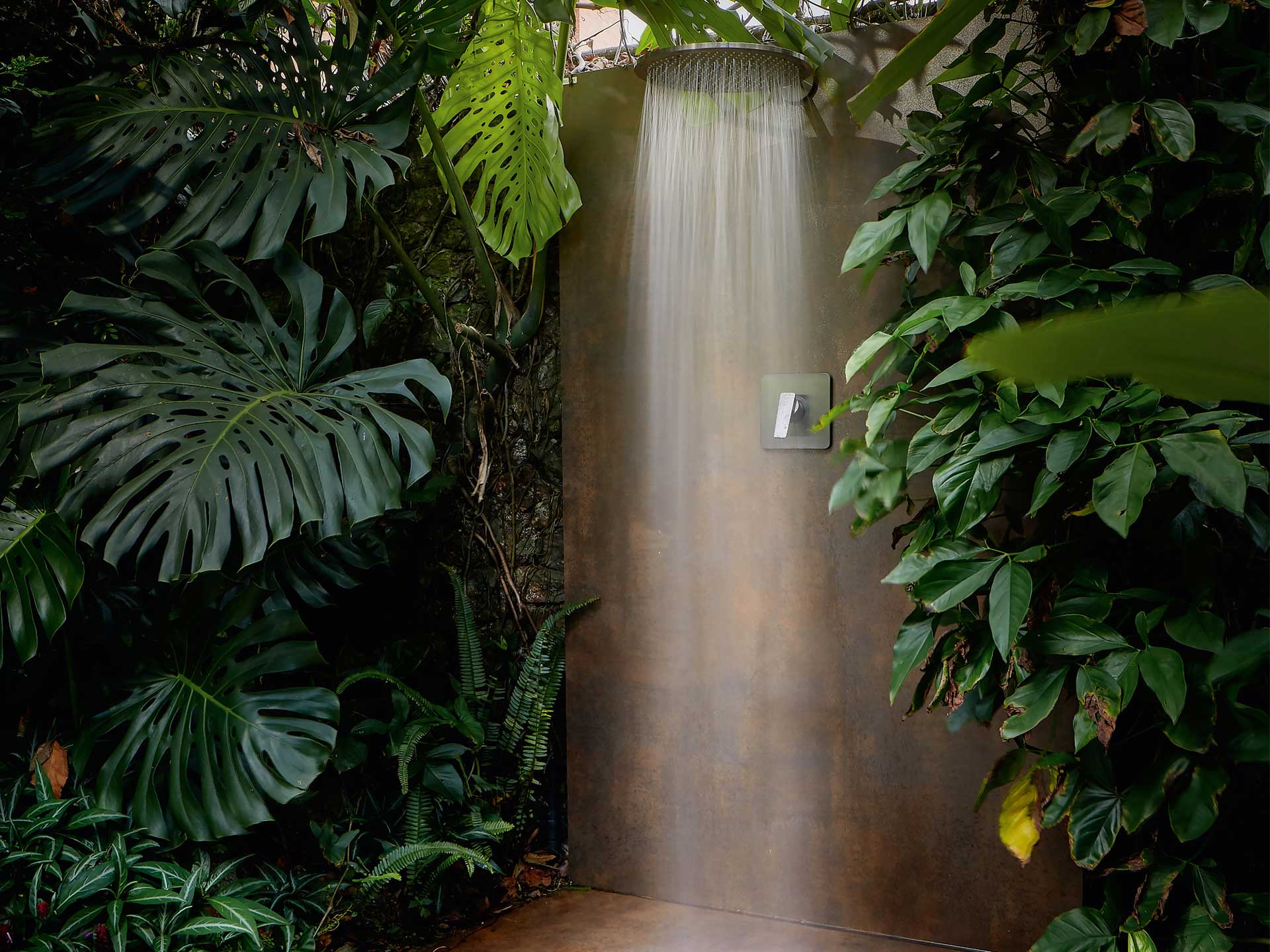
- Image credit: Neolith
Divide with modular fencing
Garden fences have been defining boundaries between our homes for centuries, but instead of just using them around your perimeters, they can be a great way to zone your garden. Ditch garish, brown fences and replace them with a a stylish alternative to enhance your space. The Neva Modular Fencing system (pictured) is made from transparent acrylic with a powder coated, UV protected, aluminium frame, the panel acts as a windbreak but doesn’t hide the view. Given its modular design it can be positioned either horizontally or vertically, and you can just slide it into the Neva slotted fence post, so assembly is straightforward.
For a more natural way to zone your garden, try Agriframes ornamental growing frames that are designed for supporting plants and creating a decorative barrier. Living walls like woven willows are a beautiful way to divide your outdoor space, while dead hedges provide an incredible habitat for wildlife. You could also add a living wall into your fence for added interest.

- Image credit: Neva

